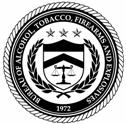 |
ATF’s 5,000 employees perform the dual responsibilities of enforcing federal criminal laws and regulating the firearms and explosives industries. ATF investigates violent crime involving firearms and explosives, acts of arson, and illegal trafficking of alcohol and tobacco products. ATF also provides training and support to its federal, state, local, and international law enforcement partners and works in 23 field divisions with representation throughout the United States, Puerto Rico, U.S. Virgin Islands, and Guam. Foreign offices are located in Mexico, Canada, Colombia, and representatives in France. |
Reports Issued
Investigative Operations at Gun Shows
The OIG’s Evaluation and Inspections Division reviewed the policies, procedures, and oversight mechanisms that guide ATF’s investigative operations at gun shows across the nation. These operations received widespread attention in February 2006 when Congress held two hearings on ATF law enforcement techniques.
The OIG found that ATF does not have a formal gun show enforcement program, but instead conducts investigative operations at gun shows when it has law enforcement intelligence that illegal firearms activity has occurred or is likely to occur at specific gun shows. We found that ATF conducted operations at 195 gun shows, or 3.3 percent of the estimated 6,000 gun shows held during our 2-year study period of FYs 2004 to 2006. Those operations resulted in 121 arrests and 83 convictions of individuals engaged in firearms trafficking and seizures of 5,345 firearms that were purchased or offered for sale illegally. The OIG found that ATF conducted 77 percent of its investigative operations at gun shows as part of ongoing investigations of specific suspects whose illegal activity happened to occur at gun shows. The remaining 23 percent of these ATF investigative operations were conducted in response to intelligence that widespread illegal firearms activity was occurring specifically at gun shows in particular cities, states, or geographic regions.
The OIG also reviewed operational plans for investigative operations at gun shows and found that these plans generally complied with ATF Headquarters’ policies and procedures. In addition, five of seven gun show promoters and all state and local law enforcement personnel interviewed by the OIG were supportive of ATF operations at gun shows. Only the two Richmond-area gun show promoters, whose shows were involved in the congressional hearings, expressed concern about ATF’s activities at gun shows. The OIG review found that, with the exception of the Richmond-area gun shows, ATF conducted its investigative operations at gun shows covertly without incident and without complaints from promoters, vendors, or the public.
National Firearms Registration and Transfer Record
At the request of Congress, the OIG’s Evaluation and Inspections Division reviewed ATF’s effectiveness in maintaining the records of registrations and transfers of weapons covered by the National Firearms Act (NFA). Congress passed the NFA in 1934 to limit the availability of machine guns, short-barreled shotguns, short-barreled rifles, silencers, and other similar weapons that often were used by criminals. NFA imposed a tax on the manufacture, import, and distribution of the weapons it covered and required ATF to collect the taxes and maintain NFA weapon ownership records in a central registry, called the National Firearms Registration and Transfer Record (NFRTR), which is maintained by ATF’s NFA Branch.
Our evaluation found that since 2004 the NFA Branch has significantly improved its processing time for applications to register or transfer ownership of NFA weapons and its process for responding to customer inquiries. However, we also found that management and technical deficiencies have limited ATF’s ability to adequately address errors in the NFRTR database. The NFA Branch staff has not processed applications or entered database information uniformly, which has resulted in errors in records, reports, and queries as well as inconsistent decisions on NFA weapons registration and transfer applications. The processes were not uniform because: 1) the NFA Branch has not established adequate standard operating procedures for processing applications and working with the NFRTR, 2) NFA Branch staff members did not receive any structured training when they were hired, 3) NFA Branch managers did not communicate regularly with staff members, and 4) staff members who reviewed and processed applications received conflicting direction from their supervisors.
Further, the NFA Branch was not timely in correcting errors and discrepancies in the NFRTR database after problems were identified by ATF investigators during compliance inspections of federal firearms licensees. However, we did not find evidence that individual weapons owners or federal firearms licensees were sanctioned or criminally prosecuted because of errors in the database.
The OIG made eight recommendations to help improve the processing of NFA applications and reduce errors in the NFRTR, including that ATF develop comprehensive, standard operating procedures for the NFA Branch and standard training for its staff, as well as an action plan to fix the technical programming flaws and errors in the NFRTR database. ATF concurred with our recommendations.
Investigations
The following is an example of a case involving ATF that the OIG’s Investigations Division handled during this reporting period:
- An investigation by the OIG’s Miami Field Office developed evidence that an ATF special agent conducted unauthorized National Crime Information Center checks and disclosed sensitive law enforcement information to her husband in order to assist him in his job. Additionally, the investigation determined that the special agent offered to obtain information for her husband related to investigations of her husband’s employer. The USAO for the Southern District of Alabama declined prosecution. The OIG completed its investigation and provided its report to ATF for appropriate action.
Ongoing Work
ATF’s Controls over Weapons, Laptops, and Other Sensitive Property
The OIG is examining the effectiveness of ATF’s controls over weapons, ammunition, explosives, and laptop computers, as well as the adequacy of its actions taken in response to weapons, ammunition, explosives, and laptop computers identified as lost or stolen.